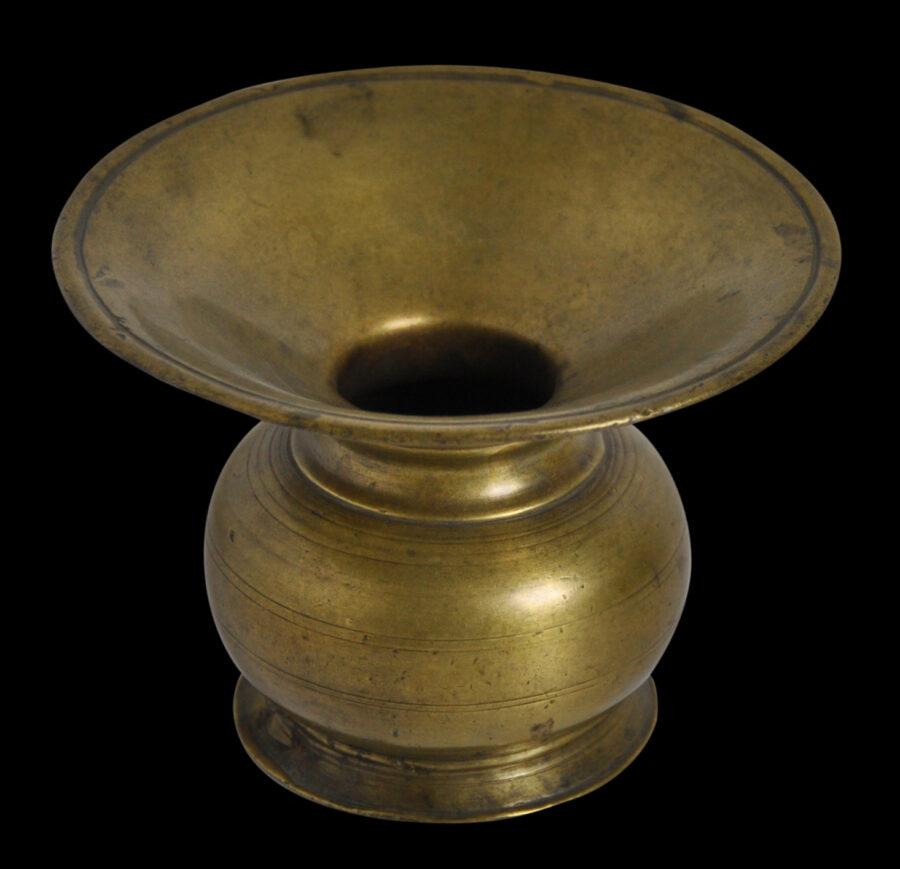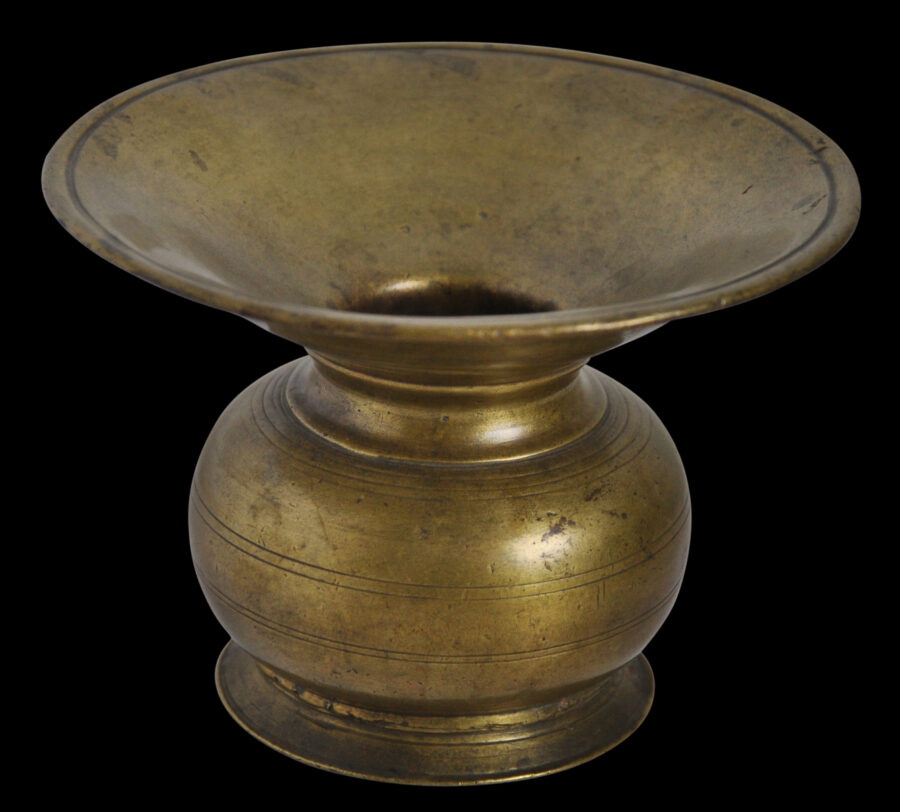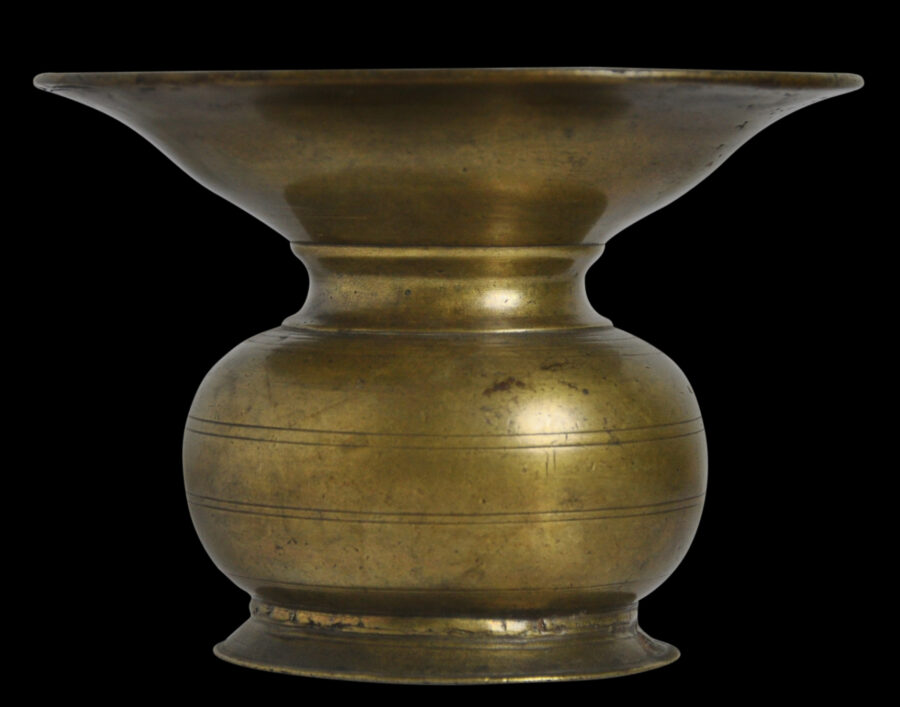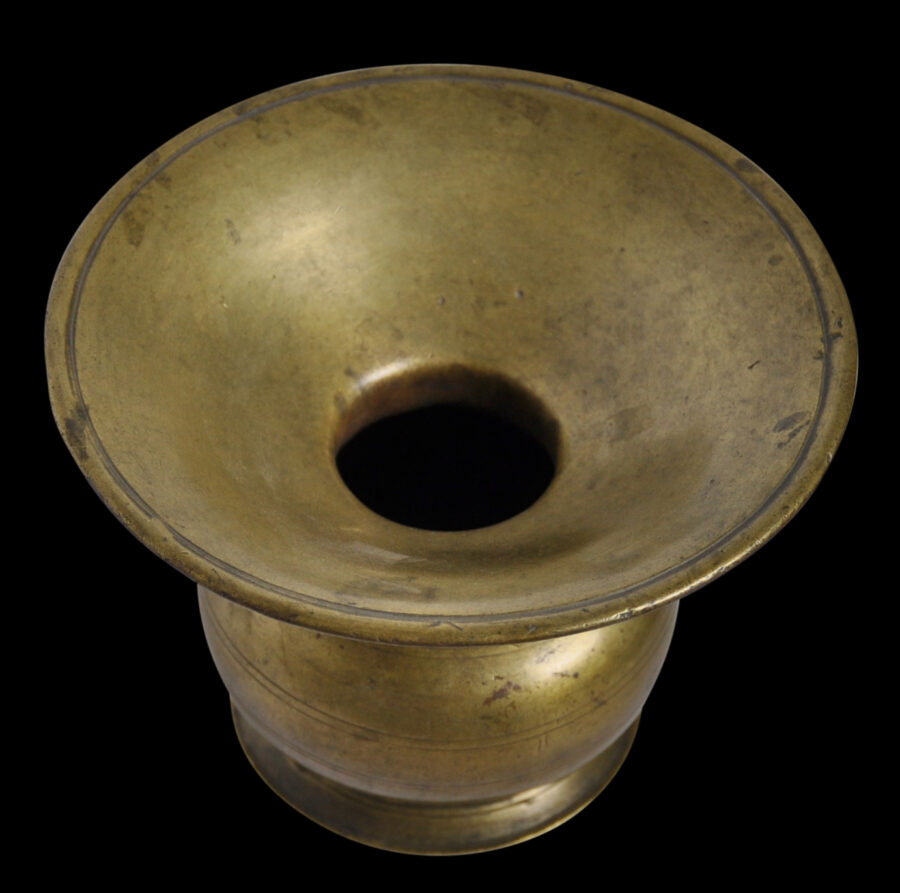This fine cast brass table spittoon is from 18th-19th century Deccan or northern India (similar spittoons also were used among the Malays in Malaysia) and is based on Chinese porcelain prototypes that date to as early as the 10th century (see Zebrowski (1997, p. 181) for an illustration of a Chinese porcelain example in the British Museum.)
It sits on a low, flared ring foot; is of baluster form; and has a wide, concave mouth. The foot, shoulder and rim (both the interior and exterior) are engraved with fine, concentric circles.
Such spittoons were used in conjunction with chewing betel or paan, the chewing of which produced much red-stained saliva which was best expelled from the mouth. Often they can be seen in early Mughal paintings, beside seated princely rulers, along with other accouterments associating with the taking of paan.
Such spittoons sat on a table or on a floor rug where the user was sitting, and were designed to be held in the hand when used.
The example here is in fine condition, with obvious age.

A related spittoon in London’s Victoria & Albert Museum, attributed to 17th century Deccan.
References
Zebrowski, M., Gold, Silver & Bronze from Mughal India, Alexandria Press, 1997.





